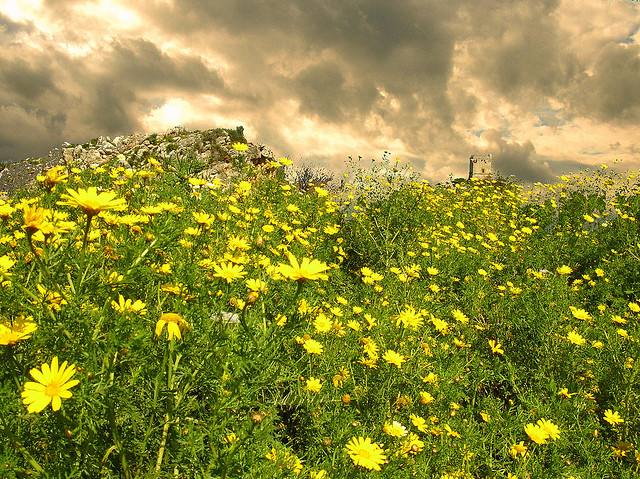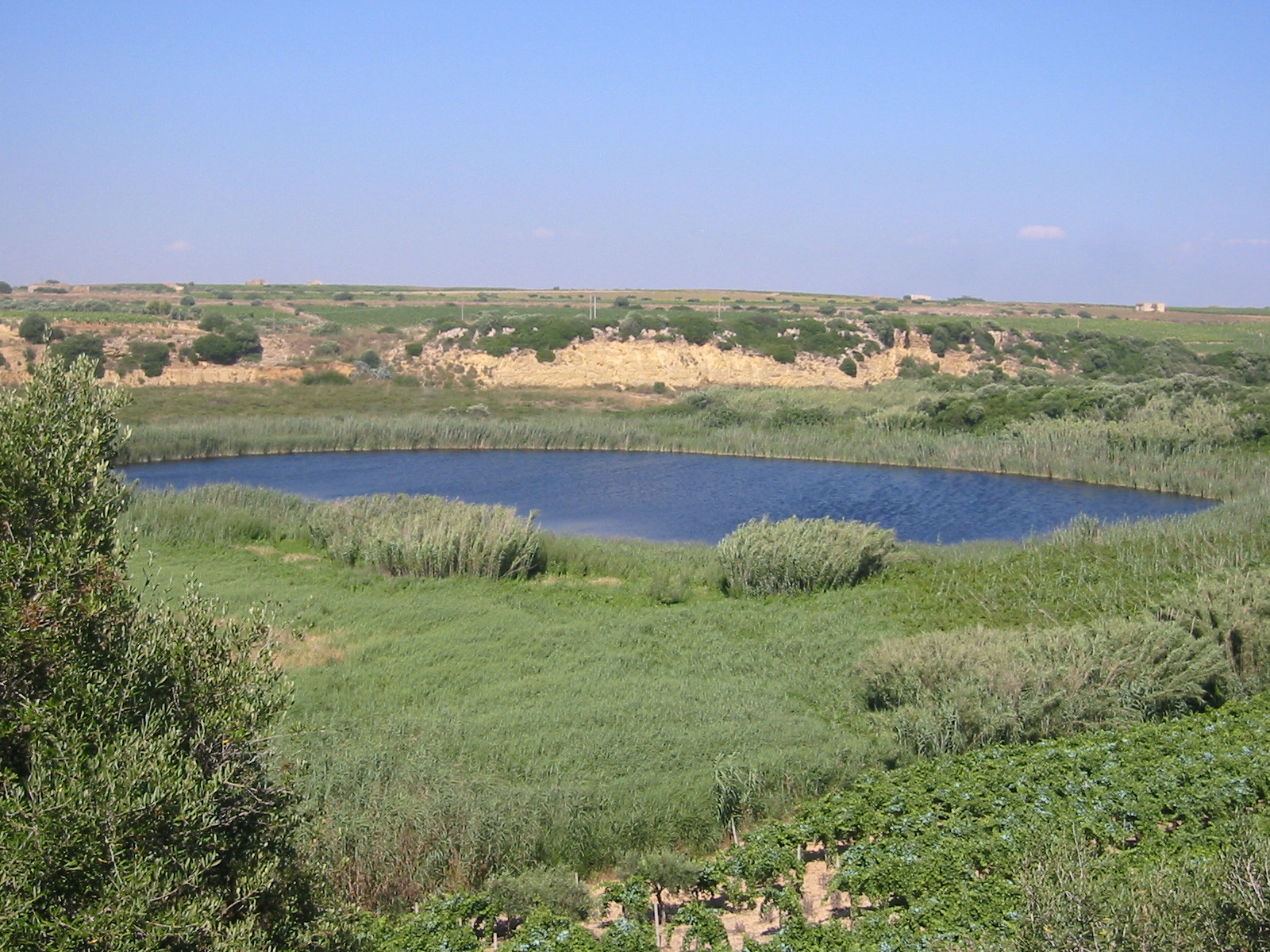Reviving extinct Mediterranean forests
Extinct Mediterranean forests of biblical times could return and thrive in warmer, drier future, researchers argue in a September 2015 report for Frontiers in Ecology and the Environment.

Wildflowers sprawl over a rocky hill on the island of Sicily, Italy, where oak and olive tree forests once flourished. Credit, Paolo Macorig, Flikr. Some rights reserved.
The Mediterranean has cradled humanity and our cities, farms, domesticated animals, and logging habits for many thousands of years. During the last 5 to 8 millennia, as people developed farming and settled in cities, the landscape has gradually changed from a thick canopy of trees to open grass and shrubs. The ghosts of Sicily’s extinct evergreen forests of holm oak (Quercus ilex) and olive trees (Olea europaea) remain in the record of pollen left in the lakebed sediments. On the slightly cooler and wetter coast of Italy’s Tuscany region, European silver fir (Abies alba) once mixed with holm oak and deciduous oaks (Quercus cerris and Quercus pubescens).

A grove of holm oak (Quercus ilex) on the south shore of Gorgo Basso, Sicily, stands relic to the forests of past millennia. Ancient pollen from the long-vanished forests, held in sediments collected from the lake bottom, testifies to the dense canopy of oak and olive trees that dominated the landscape more that 2,000 years ago. Scientists writing in the September issue of ESA Frontiers say that the diminution of the forest has been driven by the disturbances of human habitation and industry. With help, they say, the forests could again thrive under current and future climactic conditions. Credit, Willy Tinner, 2005.
Many researchers believe that progressively drier conditions in the Mediterranean brought about these changes in vegetation over the past 5–8,000 years. With the accelerating warming and drying brought to the region by anthropogenic climate change, the native trees might be expected to be pushed beyond the edge of their drought and heat tolerance, never to return. Some researchers have even suggested restoring forests with non-native Eucalyptus species from Australia or Douglas fir from North America.
In the September 2015 issue of ESA Frontiers, Paul Henne and colleagues dispute the idea that a drying climate was responsible for the disappearance of Mediterranean forests. They think that frequent wildfires, logging, agriculture, and the browsing of cattle, sheep, goats and unchecked deer over the long history of human occupation have wrought the changes to the landscape.
As a postdoc at the University of Bern, Switzerland, Henne, now research ecologist for the US Geological Survey’s Geosciences and Environmental Change Science Center in Denver, Colo., and his coauthors simulated current climate conditions in Sicily and coastal Tuscany, but with minimum human disturbance. Their models found that forests of oak and olive, much like the extinct, “pristine” forests that persisted until about 2,000 years ago, could prosper at present on the warm, dry coast of Sicily if fire is suppressed in the highly flammable shrublands until evergreen trees can mature. Silver fir (Abies alba) could be seen again at low elevation in Tuscany if protected from grazing animals and fire while the trees are young and vulnerable. Restoration of native vegetation, the authors argue, could slow erosion, improve water quality, sequester carbon, harbor wildlife, reduce fire risk, and build resilience for a hotter, drier future.

North of Gorgo Basso, open fields and maquis shrubland stretch into the distance. Open shrublands predominate in modern Sicily, where oak and olive forests once grew. Credit, Willy Tinner, 2005.
- Reviving extinct Mediterranean forest communities may improve ecosystem potential in a warmer future. (2015) Paul D Henne, Ché Elkin, Jörg Franke, Daniele Colombaroli, Camilla Calò, Tommaso La Mantia, Salvatore Pasta, Marco Conedera, Orla Dermody, and Willy Tinner. Frontiers in Ecology and the Environment13(7): 356-362. http://dx.doi.org/10.1890/150027